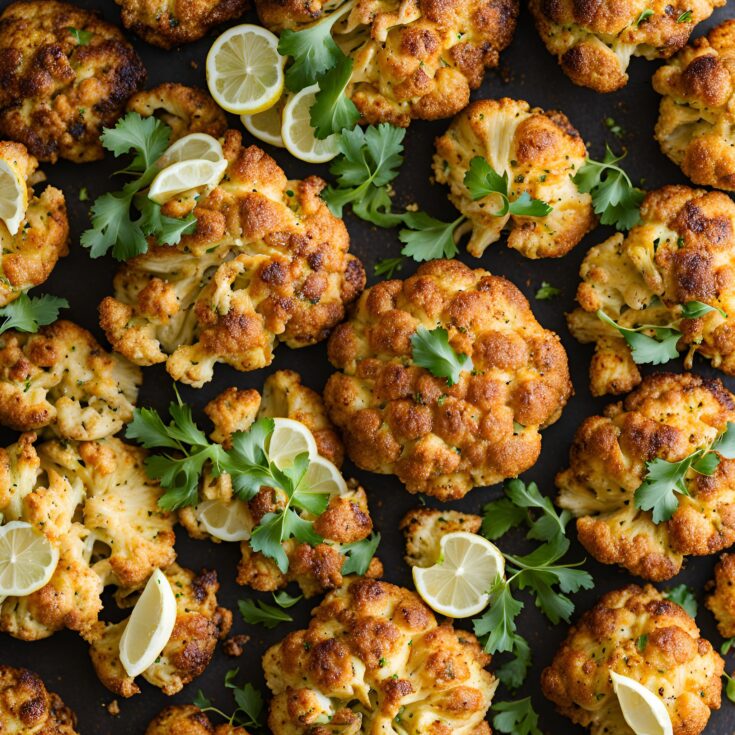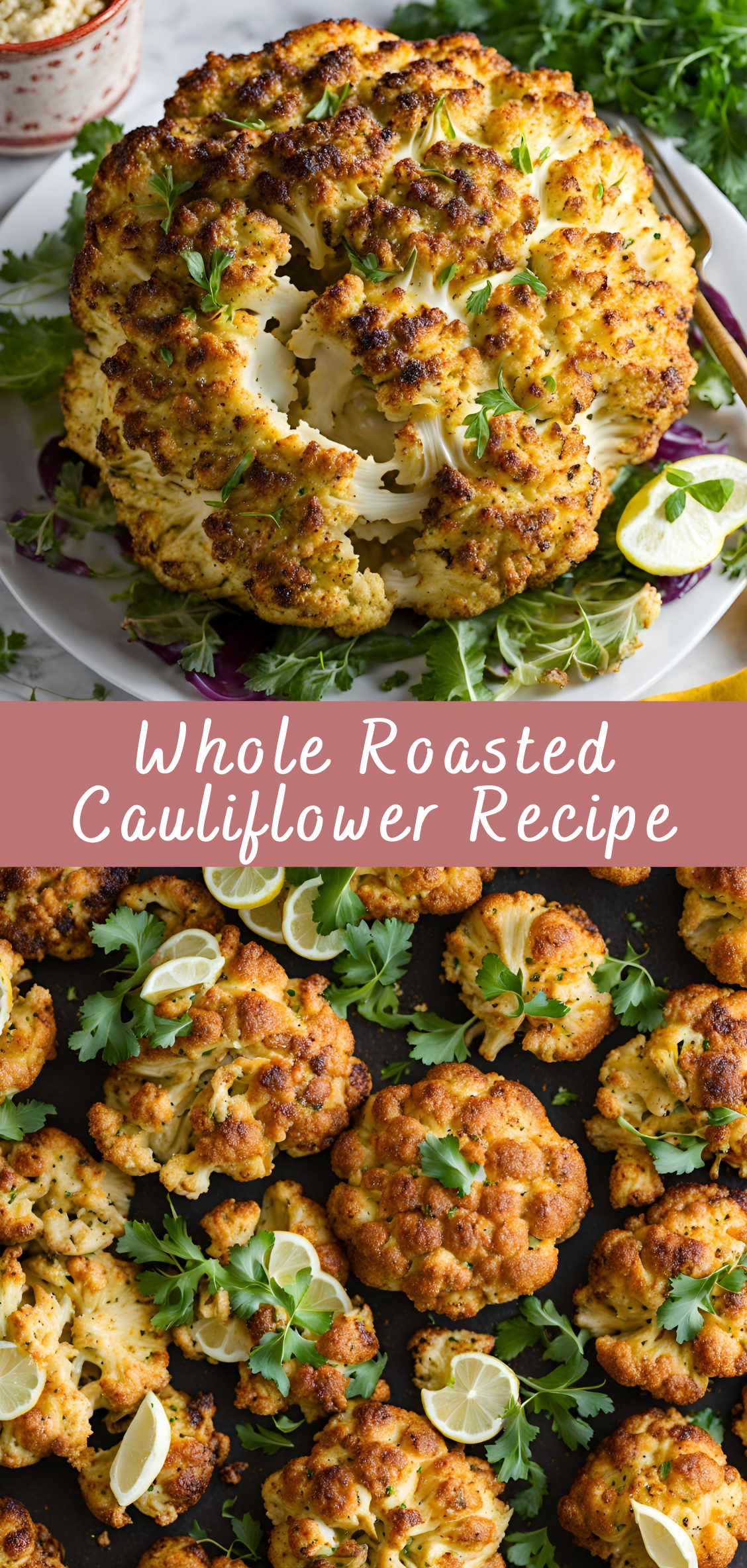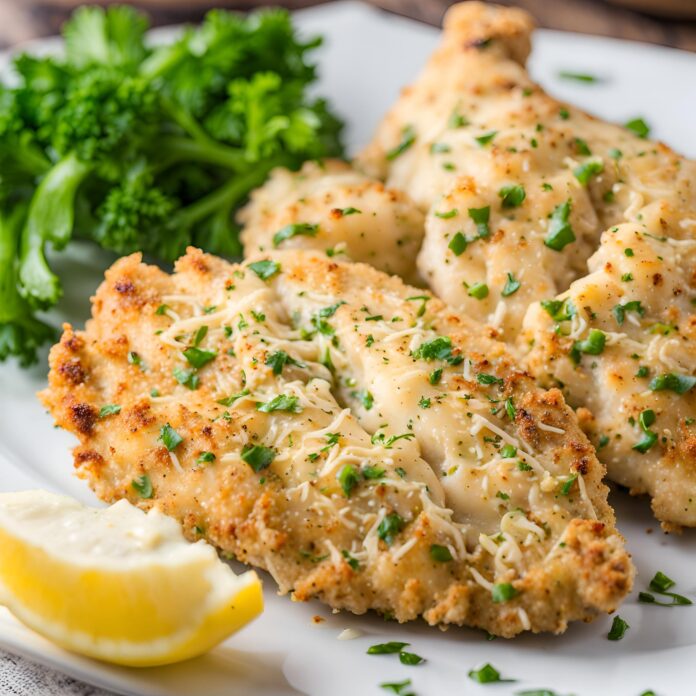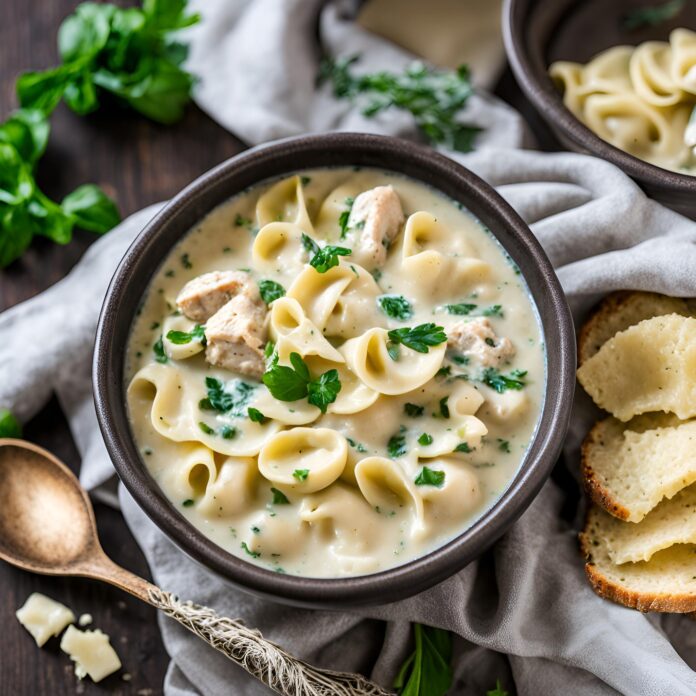Whole Roasted Cauliflower Recipe
A whole roasted cauliflower recipe, when prepared correctly, can serve as a stunning centerpiece and a truly satisfying dish. This recipe not only highlights the natural flavor and texture of cauliflower but also allows for creative seasoning and garnishing that can transform this humble vegetable into a show-stopping dish. Whether you’re looking for a healthy side dish or a main vegetarian meal, roasted cauliflower can be adapted to suit any dietary preference or culinary style.

Let’s delve into the intricacies of preparing the Whole Roasted Cauliflower, explore various flavor profiles, and understand how to perfectly season, cook, and serve this dish. This detailed guide will provide you with step-by-step instructions, tips, and tricks to make the most out of this simple yet versatile vegetable.
Introduction to Whole Roasted Cauliflower
Cauliflower has seen a significant rise in popularity in recent years, especially as a substitute for carb-heavy ingredients like rice, potatoes, and even pizza crust. However, roasted whole cauliflower remains one of the simplest and most elegant ways to prepare this vegetable. By roasting it whole, you preserve its structure, creating a visually striking dish that maintains its tenderness while developing deep, caramelized flavors.
Roasting a whole cauliflower enhances its natural sweetness and nuttiness, while the outer layers develop a crispy, golden-brown crust that contrasts beautifully with the tender inner florets. It’s a dish that brings out the best in cauliflower—transforming it from an often-underestimated vegetable into a bold, flavorful centerpiece.
This recipe is versatile, with a variety of seasonings and marinades that can be used to suit your personal tastes, from savory and garlicky to spicy and bold. Roasted cauliflower is also naturally vegan, gluten-free, and low-carb, making it an excellent choice for those with dietary restrictions or preferences.
Choosing the Perfect Cauliflower
When selecting a cauliflower for roasting, look for one that is fresh, firm, and has tightly packed florets. The outer leaves should be bright green, and the cauliflower should feel heavy for its size. Here are a few tips for choosing the perfect cauliflower:
- Firmness: The cauliflower should feel firm to the touch, with no soft spots or blemishes.
- Color: Look for a white cauliflower with no discoloration. The florets should be bright white, with no yellowing or browning.
- Leaves: The leaves surrounding the cauliflower should be green and fresh. Avoid cauliflower with dried-out or wilted leaves.
- Size: Depending on the number of servings you need, you can select a small, medium, or large head of cauliflower. A medium head (about 2-3 pounds) is typically perfect for roasting whole.
Necessary Equipment
To make this recipe, you’ll need a few basic kitchen tools:
- Baking Sheet: A large baking sheet is ideal for roasting the cauliflower evenly.
- Parchment Paper: While not essential, parchment paper can help with clean-up and prevent the cauliflower from sticking.
- Knife: A sharp knife is necessary for trimming the cauliflower and cutting off any outer leaves.
- Brush: Use a pastry brush to evenly coat the cauliflower with olive oil or any marinade.
- Measuring Spoons: For precise seasoning and oil measurements.
- Foil: Aluminum foil can be used to cover the cauliflower during the initial phase of roasting, keeping it moist.
Preparation Time
- Prep Time: 10-15 minutes (for cleaning, trimming, and seasoning the cauliflower).
- Cook Time: 45-60 minutes, depending on the size of the cauliflower and your preferred level of crispness.
- Total Time: 55-75 minutes.
Step-by-Step Instructions
Step 1: Preparing the Cauliflower
- Trim the cauliflower: Remove the green leaves and cut off the stem so that the cauliflower can sit flat on the baking sheet.
- Wash the cauliflower: Rinse the cauliflower under cold water to remove any dirt or residue. Pat it dry with a clean towel.
- Season the cauliflower: Place the cauliflower on a baking sheet or in a shallow roasting pan. Brush the entire head with olive oil, ensuring that it’s evenly coated.
- Add seasonings: Sprinkle salt, pepper, garlic (either minced or powdered), and any other spices or herbs you’re using. Make sure to rub the seasonings into the cauliflower’s surface for even coverage.
Step 2: Roasting the Cauliflower
- Preheat the oven: Preheat your oven to 400°F (200°C).
- Roast the cauliflower: Place the cauliflower in the oven and roast for 25-30 minutes. After this, flip the cauliflower over (using tongs or a spatula) to ensure it cooks evenly. Continue roasting for another 20-30 minutes, or until the cauliflower is golden brown and tender when pierced with a fork.
- Check for doneness: The cauliflower should be tender inside and have a crispy, golden-brown exterior.
Flavor Variations
While the classic roasted cauliflower is delicious on its own, you can experiment with different flavor profiles:
- Classic Garlic and Herb: Use garlic, rosemary, thyme, olive oil, and a squeeze of lemon.
- Spicy Harissa Roasted Cauliflower: Coat the cauliflower with harissa paste, olive oil, cumin, and paprika for a spicy kick.
- Lemon and Parmesan Crusted Cauliflower: Add grated Parmesan cheese halfway through roasting, and finish with a generous squeeze of fresh lemon juice.
- Indian-Inspired: Season the cauliflower with turmeric, cumin, coriander, and garam masala for a warm, aromatic flavor profile.
Serving Suggestions
Whole roasted cauliflower can be served in many ways:
- As a Side Dish: Pair it with roasted meats, grilled fish, or plant-based dishes like lentils or quinoa.
- As a Main Dish: Serve with grains, roasted vegetables, and a rich tahini or yogurt-based sauce for a complete, satisfying vegetarian meal.
- With Sauces and Dips: Serve the roasted cauliflower with a variety of sauces, such as tahini, yogurt sauce, or chimichurri.
How to Make a Whole Roasted Cauliflower in the Oven
To achieve the perfect roasted cauliflower in the oven, follow the detailed instructions in the previous sections. Roasting in the oven allows the cauliflower to cook evenly, creating a crispy outer layer while maintaining its tender interior. Be sure to keep an eye on the cauliflower in the final 10 minutes to prevent overcooking.
How to Grill a Whole Roasted Cauliflower
Grilling a whole cauliflower imparts a smoky flavor that you won’t get from the oven. Coat the cauliflower in olive oil and seasonings, then place it directly on a preheated grill over medium heat. Grill for about 30-40 minutes, turning every 10 minutes, until the cauliflower is golden and tender.
How to Make Cauliflower with a Crispy Outer Crust
If you prefer an extra-crispy exterior, you can increase the temperature at the end of the roasting process (to about 425°F/220°C) for the last 10-15 minutes. Alternatively, you can broil the cauliflower for a few minutes at the end of roasting to achieve a crispy, golden-brown crust.
Common Mistakes to Avoid
- Overcooking or undercooking: Make sure to check for doneness at the right time. The cauliflower should be tender inside and golden brown outside, but not burnt.
- Skipping seasoning: Cauliflower has a subtle flavor on its own, so seasoning is crucial. Don’t be afraid to be generous with your spices and herbs.
- Not trimming the stem: Make sure to trim the stem so the cauliflower can sit flat on the baking sheet and roast evenly.
Cauliflower for Meal Prep
Whole roasted cauliflower makes an excellent meal prep option. Prepare it in bulk, store it in containers, and serve with a variety of sauces or side dishes throughout the week.
Pairing Wine with Roasted Cauliflower
A crisp white wine like Sauvignon Blanc or Chardonnay pairs well with roasted cauliflower, as their acidity balances the richness of the vegetable. For a red wine option, try a light Pinot Noir or a dry Rosé.
Cauliflower in Different Cuisines
Cauliflower is used in cuisines worldwide, including Indian (where it’s part of curries like Aloo Gobi), Mediterranean (where it’s often roasted with garlic and lemon), and North African (where it’s included in tagines with spices like cumin and coriander).
Frequently Asked Questions
- Can I make this recipe without olive oil?
Yes, you can use other oils like avocado oil, or even roast the cauliflower without oil for a lower-fat version. - Can I make it in advance?
Yes, you can prepare the cauliflower a day ahead and roast it just before serving.
Conclusion
Whole roasted cauliflower is a simple yet sophisticated dish that can be customized with different flavors, seasonings, and garnishes. Whether you’re looking for a vegan main course, a healthy side, or a way to impress guests, this recipe delivers. With its rich, caramelized outer crust and tender interior, roasted cauliflower is a must-try for anyone seeking a versatile, nutritious dish that can be adapted to any meal.
Advanced Cooking Techniques for Whole Roasted Cauliflower
While roasting a whole cauliflower is a relatively straightforward process, there are a few advanced techniques that can help elevate the dish even further. These methods focus on achieving an even more impressive texture and flavor profile, whether you’re looking to add smokiness, extra crispness, or even a more tender, juicy result.
1. Pre-Blanching for Tenderness
If you want your roasted cauliflower to be exceptionally tender in the center while still maintaining a crispy exterior, you can pre-blanch the cauliflower before roasting.
How to blanch cauliflower:
- Bring a large pot of water to a boil and season it with a pinch of salt.
- Submerge the whole cauliflower into the boiling water for about 3-4 minutes.
- After blanching, transfer the cauliflower immediately into a bowl of ice water to stop the cooking process.
- Once cool, pat the cauliflower dry thoroughly before seasoning and roasting.
Blanching helps to soften the cauliflower without overcooking it, ensuring that the center is tender while the outside crisps up beautifully in the oven. This is particularly useful for larger heads of cauliflower.
2. Roasting at High Heat
For a more dramatic roasted effect, try roasting at a higher temperature. Roasting at 425°F (220°C) can create an even crispier crust, especially if you’re aiming for a slightly charred, caramelized exterior.
How to roast at high heat:
- Preheat your oven to 425°F (220°C).
- Roast the cauliflower for about 20-25 minutes, then flip it carefully to ensure even cooking.
- Continue roasting for another 20-30 minutes, monitoring the cauliflower closely to ensure it doesn’t burn, especially in the final stages.
The higher heat will help intensify the roasted flavors and create a lovely deep golden-brown color on the cauliflower’s outer layers.
3. Reverse Searing (For a Perfect Outer Crust)
Another advanced method is reverse searing, which involves starting by roasting the cauliflower at a lower temperature to cook it gently, followed by a quick sear at high heat to achieve a crispy, browned exterior.
How to reverse sear cauliflower:
- Start by roasting the cauliflower at 300°F (150°C) for 35-40 minutes. This will allow the cauliflower to cook through without burning the outside.
- After the cauliflower is tender (check by piercing it with a fork), increase the oven temperature to 475°F (245°C) or switch to the broiler.
- Roast for an additional 5-10 minutes or until the cauliflower gets a deep golden-brown crust.
This method will ensure an even texture—tender inside with a deliciously crisp, charred exterior.
Elevating the Flavor Profile
While roasted cauliflower can be a beautiful dish on its own, it becomes even more intriguing when you pair it with complementary flavors. Below are some elevated seasoning and flavor combinations that can transform your roasted cauliflower into something exceptional.
1. Mediterranean Roasted Cauliflower
To add a Mediterranean flair to your cauliflower, combine olive oil, garlic, oregano, thyme, and a squeeze of lemon. After roasting, sprinkle with crumbled feta cheese, Kalamata olives, and a touch of fresh parsley.
- Flavor notes: Salty, tangy, herby
- Serving suggestions: Serve with a Greek salad, hummus, and warm pita for a Mediterranean feast.
2. Sweet and Spicy Roasted Cauliflower
For a balance of heat and sweetness, try a glaze of honey, sriracha, soy sauce, and a little rice vinegar. The sweet honey and spicy sriracha create a delicious contrast against the roasted cauliflower’s earthiness.
- Flavor notes: Sweet, spicy, umami
- Serving suggestions: Pair with rice or quinoa and a side of steamed vegetables for a satisfying meal.
3. Smoky BBQ Cauliflower
Coat the cauliflower with a smoky BBQ sauce before roasting to infuse a deep, smoky flavor. Adding a little smoked paprika, garlic powder, and onion powder will further enhance the dish.
- Flavor notes: Smoky, sweet, tangy
- Serving suggestions: Serve with cornbread, coleslaw, and baked beans for a BBQ-themed meal.
4. Indian-Inspired Spices
Marinate the cauliflower in a mixture of yogurt, turmeric, cumin, coriander, garam masala, and ginger. Roast the cauliflower and serve it with a garnish of cilantro and a squeeze of lemon juice for an Indian-inspired flavor profile.
- Flavor notes: Warm, earthy, aromatic
- Serving suggestions: Pair with basmati rice, dal (lentils), and naan for a complete Indian-inspired meal.
How to Serve Whole Roasted Cauliflower in Different Contexts
The versatility of whole roasted cauliflower means it can be served in various ways depending on the occasion, making it a great addition to different types of meals. Whether you’re hosting a dinner party, preparing a family meal, or meal prepping for the week, there’s a perfect way to serve this dish.
1. As a Side Dish for Meat or Fish
Roasted cauliflower is an excellent side dish that pairs well with a variety of proteins. Its rich texture and flavor complement dishes like grilled steak, roasted chicken, lamb chops, or pan-seared fish. The cauliflower can take the place of starch-heavy sides like potatoes, rice, or pasta, offering a lighter, healthier option.
- Pairing suggestion: Serve with grilled chicken and roasted potatoes or salmon with a side of roasted Brussels sprouts.
2. As a Main Vegetarian or Vegan Dish
For a satisfying vegetarian or vegan meal, serve the whole roasted cauliflower as the centerpiece, accompanied by a variety of plant-based sides such as grains, legumes, and roasted vegetables. Adding creamy sauces, such as tahini or cashew cream, will provide extra richness and flavor.
- Pairing suggestion: Serve with quinoa, a chickpea salad, or a creamy lentil soup for a complete, filling meal.
3. For a Show-Stopping Centerpiece
If you’re hosting a dinner party or holiday meal, a whole roasted cauliflower makes an impressive centerpiece. Its size and aesthetic appeal will captivate your guests, while its rich, roasted flavor will leave them wanting more. Consider dressing it up with sauces, herbs, and garnishes for an even more eye-catching presentation.
- Pairing suggestion: Add a side of roasted root vegetables, a wild rice pilaf, and a vibrant salad for a balanced, festive meal.
4. As a Snack or Appetizer
Roasted cauliflower can be cut into wedges or florets and served as a flavorful snack or appetizer. Pair it with a dip like ranch, yogurt-based garlic sauce, tzatziki, or chimichurri for added flavor. This is perfect for casual gatherings, game nights, or light parties.
- Pairing suggestion: Serve with a fresh herb dip, salsa verde, or spicy harissa sauce for an irresistible bite-sized treat.
Perfecting the Roasted Cauliflower Every Time: Tips and Tricks
To achieve the perfect roasted cauliflower, there are several tips and tricks that can make the process even easier and ensure the best results each time.
1. Don’t Skip the Oil
A light coating of oil is crucial for getting that crispy, golden-brown exterior. While you can use other types of fat (like melted butter or avocado oil), olive oil is the go-to for its flavor and ability to achieve a crispy finish.
2. Season Well
Make sure to season the cauliflower generously before roasting. The cauliflower’s mild flavor benefits from bold seasonings, so don’t be afraid to experiment with herbs, spices, and acid (like lemon juice or vinegar). If you’re unsure, start with basic salt, pepper, garlic, and olive oil, then build from there.
3. Roast at the Right Temperature
Roast your cauliflower at 400°F (200°C) for optimal results. If you want a crispy, almost caramelized outer layer, bump the temperature up to 425°F (220°C) in the final minutes of roasting. This will ensure the cauliflower is perfectly tender on the inside and crunchy on the outside.
4. Rotate for Even Roasting
To avoid uneven roasting, rotate the cauliflower halfway through the cooking process. This ensures that all sides get exposure to the heat, allowing the cauliflower to cook evenly and develop a uniform golden-brown crust.
5. Rest Before Serving
Let the cauliflower rest for a few minutes after roasting before serving. This gives the flavors time to settle and allows the cauliflower to firm up slightly, making it easier to slice or serve whole.
The Ultimate Whole Roasted Cauliflower Recipe
Whole roasted cauliflower is a wonderfully adaptable and nutritious dish that can easily fit into a variety of meals, from casual weeknight dinners to more formal gatherings. Whether you opt for a simple seasoning of garlic, rosemary, and olive oil or go bold with Indian spices or a smoky BBQ glaze, this dish never fails to impress.
Not only is roasted cauliflower flavorful and easy to make, but it also offers a range of health benefits, making it a great choice for anyone looking to eat more plant-based or cut down on carbs. This recipe is a true testament to the versatility and deliciousness of cauliflower when cooked to perfection.
Experiment with different seasonings, garnishes, and cooking methods to create your own signature version of whole roasted cauliflower. Whether you’re serving it as a side dish, main course, or snack, you’re sure to enjoy the rich, tender, and crispy textures that make this vegetable shine.
Whole Roasted Cauliflower Recipe

A whole roasted cauliflower recipe, when prepared correctly, can serve as a stunning centerpiece and a truly satisfying dish. This recipe not only highlights the natural flavor and texture of cauliflower but also allows for creative seasoning and garnishing that can transform this humble vegetable into a show-stopping dish. Whether you're looking for a healthy side dish or a main vegetarian meal, roasted cauliflower can be adapted to suit any dietary preference or culinary style.
Ingredients
- 1 medium to large head of cauliflower (about 2–3 pounds)
- 3 tbsp olive oil (or melted butter for a richer flavor)
- 1 tsp salt (or to taste)
- 1/2 tsp black pepper
- 1 tsp garlic powder
- 1 tsp onion powder
- 1/2 tsp smoked paprika (optional, for smoky flavor)
- 1/2 tsp turmeric (optional, for color and subtle flavor)
- 1/2 tsp dried thyme or rosemary (optional, for added herb flavor)
- Fresh lemon juice (optional, for serving)
- Fresh parsley (optional, for garnish)
- Grated Parmesan cheese (optional, for topping)
Instructions
1. Prepare the Cauliflower:
- Preheat your oven to 400°F (200°C).
- Remove the leaves from the cauliflower and trim the stem so the cauliflower sits flat on a baking sheet.
- If the stem is particularly thick, you can trim it further, but be careful not to cut too much off, as the cauliflower needs to remain whole.
2. Season the Cauliflower:
- In a small bowl, mix the olive oil (or melted butter), salt, pepper, garlic powder, onion powder, smoked paprika, turmeric, and dried herbs (if using).
- Place the cauliflower head on a large baking sheet or in a roasting pan. Brush the entire cauliflower with the seasoned olive oil mixture, making sure to coat the florets and the stem. You can use a pastry brush or your hands to rub the oil evenly over the cauliflower.
3. Roast the Cauliflower:
- Roast the cauliflower in the preheated oven for 45–55 minutes, depending on the size of the cauliflower and how crispy you like it. The cauliflower should be tender when pierced with a knife and golden brown on the edges.
- For extra crispy edges, you can broil the cauliflower for the last 3–5 minutes of cooking, but watch carefully to avoid burning.
4. Finish and Serve:
- Once the cauliflower is roasted, remove it from the oven and let it cool for a few minutes.
- Optionally, squeeze some fresh lemon juice over the cauliflower for a bright, tangy contrast to the roasted flavor. Garnish with freshly chopped parsley for color and a burst of freshness.
- For an extra indulgent touch, sprinkle grated Parmesan cheese over the top and return the cauliflower to the oven for an additional 5 minutes to melt the cheese.
5. Slice and Enjoy:
- To serve, slice the cauliflower into wedges or florets and enjoy as a main dish or side.



